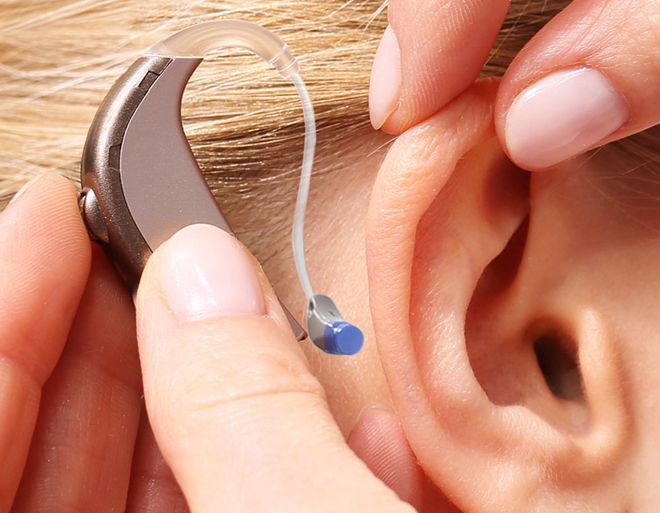

A hearing aid is a device designed to improve hearing by making sound audible to a person with hearing loss. Hearing aids are classified as medical devices in most countries, and regulated by the respective regulations. Small audio amplifiers such as PSAPs or other plain sound reinforcement systems cannot be sold as "hearing aids".
Hearing aids require configuration to match the hearing loss, physical features, and lifestyle of the wearer. The hearing aid is fit to the most recent audiogram and is programmed by frequency. This process is called "fitting" and is performed by a Doctor of Audiology, also called an audiologist. The amount of benefit a hearing aid delivers depends in large part on the quality of its fitting.
Hearing Aids are a small electronic battery-powered device that helps a hard-to-hear person hear better. Hearing aid help people hear better in quite as well as noisy environments. The hearing aids make the sound louder thus makes the user participate more in day-to-day communication and social activities. These devices are used majorly for people suffering from sensorineural hearing loss which result from the damaged of hair cells and synapses of the cochlea and auditory nerve.
The hearing aids had three major components:
Hearing aids are small in sizes and can be placed behind the ear, inside the ear or completely in the canal. The modern digital hearing aids require configuration to match the hearing loss, physical features, and lifestyle of the wearer.
Hearing aids can be classified based sound processing technology, design and battery style. Based on the sound processing technology there are two types of hearing aids - Digital Hearing Aids and Analog hearing aids. Based on hearing aids design- Hearing aids are classified as Behind the ear which are also called BTE, Receiver in canal also called as RIC, In the canal, also commonly called as ITC, completely in the canal also called as CIC and then the latest addition which are invisible hearing aids also called as soundlens or IIC. Based on the batteries - there are 2 types of hearing aid - One in which batteries need to be changed after a regular interval of time and the other one which are called Rechargeable hearing aids where there are in built batteries which need to be charged daily. With the development in the technology most o the manufacturer like Starkey, Phonak, Sonova groups, Widex, Signia ,Resound , unitron,etc, have came up with the rechargeable hearing aids as rechargeable hearing aids are more user friendly and the user does not need to go through hassle of storing batteries and changing them after every 5-7 days.
One particular hearing aid cannot work in a similar way and be equally effective for everyone. A proper selection of hearing aid is must. The hearing aid that works best depends on the kind and severity of hearing loss, the life style of the user, need and several other factors. If someone has a hearing loss in both the ears, two hearing aids are generally recommended because two aids provide a more natural signal to the brain. Hearing in both ears also will help one understand speech and locate where the sound is coming from. The severity of hearing loss is determined by doing hearing test which are also called audiometric evaluation.
Please note that a hearing aid will not restore a normal hearing. With practice, however, a hearing aid will increase the awareness of sounds and their sources. one will want to wear his hearing aid regularly, so one should always select which is convenient and easy for him/her to use. Other features to consider while selecting the hearing aids include parts or services covered by the warranty, estimated schedule and costs for maintenance and repair, options and upgrade opportunities, and the hearing aid company's reputation for quality and customer service.